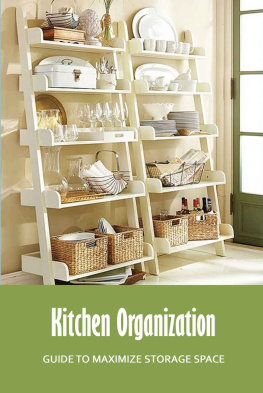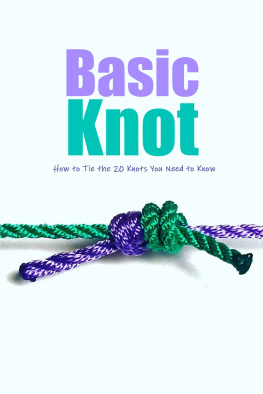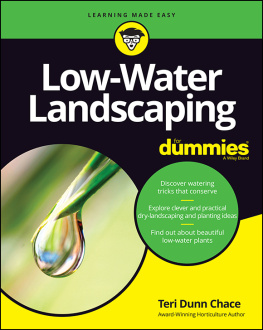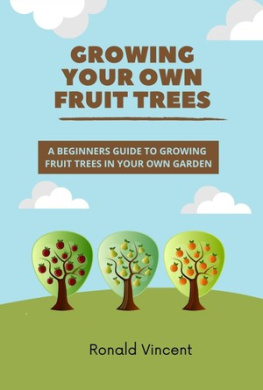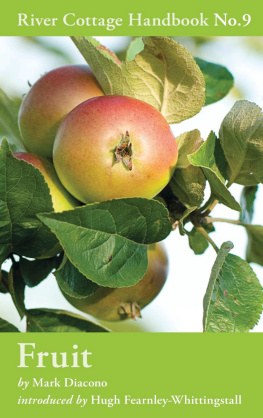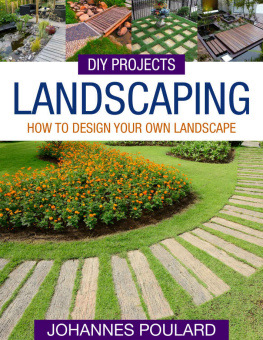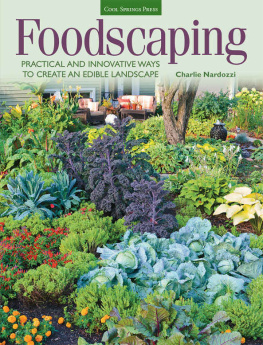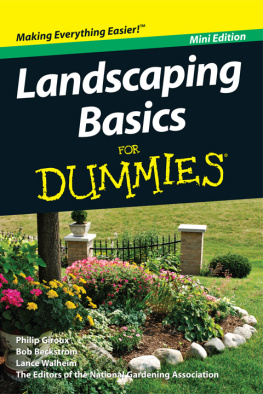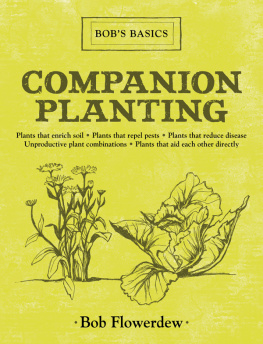Reich - A homeowners guide landscaping with fruit
Here you can read online Reich - A homeowners guide landscaping with fruit full text of the book (entire story) in english for free. Download pdf and epub, get meaning, cover and reviews about this ebook. City: North Adams;MA, year: 2009, publisher: Storey Publishing, LLC, genre: Children. Description of the work, (preface) as well as reviews are available. Best literature library LitArk.com created for fans of good reading and offers a wide selection of genres:
Romance novel
Science fiction
Adventure
Detective
Science
History
Home and family
Prose
Art
Politics
Computer
Non-fiction
Religion
Business
Children
Humor
Choose a favorite category and find really read worthwhile books. Enjoy immersion in the world of imagination, feel the emotions of the characters or learn something new for yourself, make an fascinating discovery.

A homeowners guide landscaping with fruit: summary, description and annotation
We offer to read an annotation, description, summary or preface (depends on what the author of the book "A homeowners guide landscaping with fruit" wrote himself). If you haven't found the necessary information about the book — write in the comments, we will try to find it.
A homeowners guide landscaping with fruit — read online for free the complete book (whole text) full work
Below is the text of the book, divided by pages. System saving the place of the last page read, allows you to conveniently read the book "A homeowners guide landscaping with fruit" online for free, without having to search again every time where you left off. Put a bookmark, and you can go to the page where you finished reading at any time.
Font size:
Interval:
Bookmark:
Landscaping with Fruit

A HOMEOWNERS GUIDE
Lee Reich

The mission of Storey Publishing is to serve our customers by publishing practical information that encourages personal independence in harmony with the environment.
Edited by Carleen Madigan Perkins and Gwen Steege
Art direction by Jessica Armstrong
Book design by Benjamin Shaykin
Front cover photography by Susan A. Roth (top left and right), Lee Reich Ltd. (middle left), Lynn Karlin (middle right), Pat Bruno/Positive Images (bottom left), Wheat Landscape Gardening & Designs, Inc. (bottom right)
Spine photography by Lee Reich Ltd.
Back cover photography of paperback edition and hardcover case by David Cavagnaro (left), Saxon Holt/PhotoBotanic (right), Genevieve Reich (author)
Back cover photography of hardcover jacket by David Cavagnaro (left), Saxon Holt/PhotoBotanic (right), Mark Turner (front flap), Susan A. Roth (back flap), Genevieve Reich (author)
Interior photography credits appear on
Photographic research by Jane A. Martin, The Photo Editor
Illustrations by Elayne Sears
Landscape designs by Jill Weissman, except for by Ethan Roland and Rafter Sass, Appleseed Permaculture
Indexed by Christine R. Lindemer, Boston Road Communications
2009 by Lee Reich
All rights reserved. No part of this book may be reproduced without written permission from the publisher, except by a reviewer who may quote brief passages or reproduce illustrations in a review with appropriate credits; nor may any part of this book be reproduced, stored in a retrieval system, or transmitted in any form or by any meanselectronic, mechanical, photocopying, recording, or otherwithout written permission from the publisher.
The information in this book is true and complete to the best of our knowledge. All recommendations are made without guarantee on the part of the author or Storey Publishing. The author and publisher disclaim any liability in connection with the use of this information. For additional information, please contact Storey Publishing, 210 MASS MoCA Way, North Adams, MA 01247.
Storey books are available for special premium and promotional uses and for customized editions. For further information, please call 1-800-793-9396.
Printed in China by SNP Leefung Printers Limited
10 9 8 7 6 5 4 3 2 1
Library of Congress Cataloging-in-Publication Data
Reich, Lee.
Landscaping with fruit / Lee Reich.
p. cm.
Includes bibliographical references and index.
ISBN 978-1-60342-091-4 (pbk. : alk. paper)
ISBN 978-1-60342-096-9 (hardcover with jacket: alk. paper)
1. Fruit-culture. 2. Ornamental horticulture.
I. Title.
SB354.8.R45 2009
635'.6dc22
2008034046
Dedicated to Rosalind Creasy who, in 1982, helped open our eyes to the beauty of edible plants. Her landmark book The Complete Book of Edible Landscaping opened the door to getting these plants out of orchards and vegetable gardens and into our yards.

Grapes that are trained over an arbor provide dappled shade for an outdoor living area, as well as a bounty of fruit at the end of the summer.
CONTRARY TO WHAT GROWNUPS MAY HAVE TOLD YOU AS A CHILD, YOU CAN HAVE your cake and eat it too. When it comes to planting your yard, at least.
Garden plants have traditionally been pigeonholed into one of two categories: utilitarian, for providing food, or ornamental, for providing beauty. This ethos has plopped fruit plantings out of sight, to far corners of our backyards. And rightly so, because we generally have not chosen fruit trees, shrubs, and vines for their beauty or for their ease of growing. Where conditions favored pestsand, hence, pesticide sprayswe surely could not allow such plants near terraces or other living or play areas. When constraints of time or space have forced a decision between planting for beauty and planting for food (which, after all, can be bought), that decision has usually tipped in favor of planting for beauty.
That choice need not be made; you can have both! The pages that follow will lead you through the steps necessary to choose, plant, and grow trees, shrubs, and vines that provide luscious fruits while gracing your yard with their beauty.
In the last few decades, even the humble vegetable garden has been recognized for its untapped beauty. Ornamental vegetables, such as Scarlet Runner beans and Rainbow chard, have segued out of the vegetable garden and into the flower bed, and the flavors of edible flowers, such as spicy nasturtiums, are now more appreciated.
The time has come for fruit trees, shrubs, and vines to come into their own as ornamentals. Luscious landscaping, as Im calling it, works especially well with fruits. Why? Because fruit-bearing trees, shrubs, and vines become permanent fixtures in the landscape, their branching patterns, their bark, and their trunks enduring throughout the year and looking more dramatic with time. Many fruiting plants are spectacular ornaments and especially so in certain seasons: Just look at peach branches studded in spring with powder puffs of pink blossoms, or persimmon branches in autumn bowing under the weight of their bright orange fruit. Nanking cherry and Juneberry are among those plants that bear delectable fruits yet have actually been planted most often as ornamentals, their gustatory offerings unknowingly overlooked or ignored.
One nice feature of this kind of landscaping is that eating the fruit doesnt ruin the scenery, something I realized was not the case when I began harvesting lettuce heads from the pretty tapestry I once created with lettuces of various textures and colors in one of my vegetable beds. My persimmons fruits cling to their branches for weeks and bear in such profusion that the trees festive look lingers well into autumn despite my picking and eating plenty of their bounty. Perhaps the biggest bonus is that you get to eat homegrown fruits, natures original desserts.
Allow me a slight digression here: If youve never or rarely tasted homegrown fruits, youve missed out on some real treats. Commercial varieties of apples, peaches, grapes, and other fruits are bred and selected to bear uniformly and heavily, to withstand the jostling and other traumas of shipping, and then to hold up in storage as long as possible. Their appeal is directed to everyone, to consumers from Arizona to Maine and everywhere in betweenbut not necessarily to you in particular. And then, to get fruits to market ahead of competitors and prolong their ability to keep in storage, these fruits are generally harvested underripe. As a final insult, most commercial fruits are doused with toxic pesticides during the growing season and then, in many cases, dipped in fungicides after harvest to delay spoilage.
Contrast the fruits you can buy with what you can pick in your yard. You can grow kinds and varieties of fruits that you enjoy eating. Currants, for example, are rarely seen on market shelves, and surely not the especially delectable Primus variety of white currant. Apples are ubiquitous year-round in the markets but youre unlikely to be able to reach onto a shelf for varieties such as Esopus Spitzenberg and Hudsons Golden Gem, both favorites of apple connoisseurs. When you grow fruits in your yard, they hang on to the plants until just the right moment for harvest. Macoun apples that I pick up on crisp autumn mornings from the previous nights drops taste differentand much, much betterfrom those I can buy even at local orchards. Alpine strawberries are truly delectable when dead ripe, but at this peak of perfection are too soft to be transported much farther than from hand to mouthno problem when theyre homegrown. No need to wash those fruits you pick from your backyard before eating them, because youve selected plants that dont need spraying or dipping with pesticides. Theres much talk nowadays about the environmental and health-related benefits of eating locally grown food; you cant get more local than your yard! Finally, those luscious, healthful fruits that youve been harvesting... well, you could be picking them from plants that are beautifying your yard, elbow to elbow with rhododendrons, Japanese maples, forsythias, roses, and other strictly ornamental plants.
Next pageFont size:
Interval:
Bookmark:
Similar books «A homeowners guide landscaping with fruit»
Look at similar books to A homeowners guide landscaping with fruit. We have selected literature similar in name and meaning in the hope of providing readers with more options to find new, interesting, not yet read works.
Discussion, reviews of the book A homeowners guide landscaping with fruit and just readers' own opinions. Leave your comments, write what you think about the work, its meaning or the main characters. Specify what exactly you liked and what you didn't like, and why you think so.




